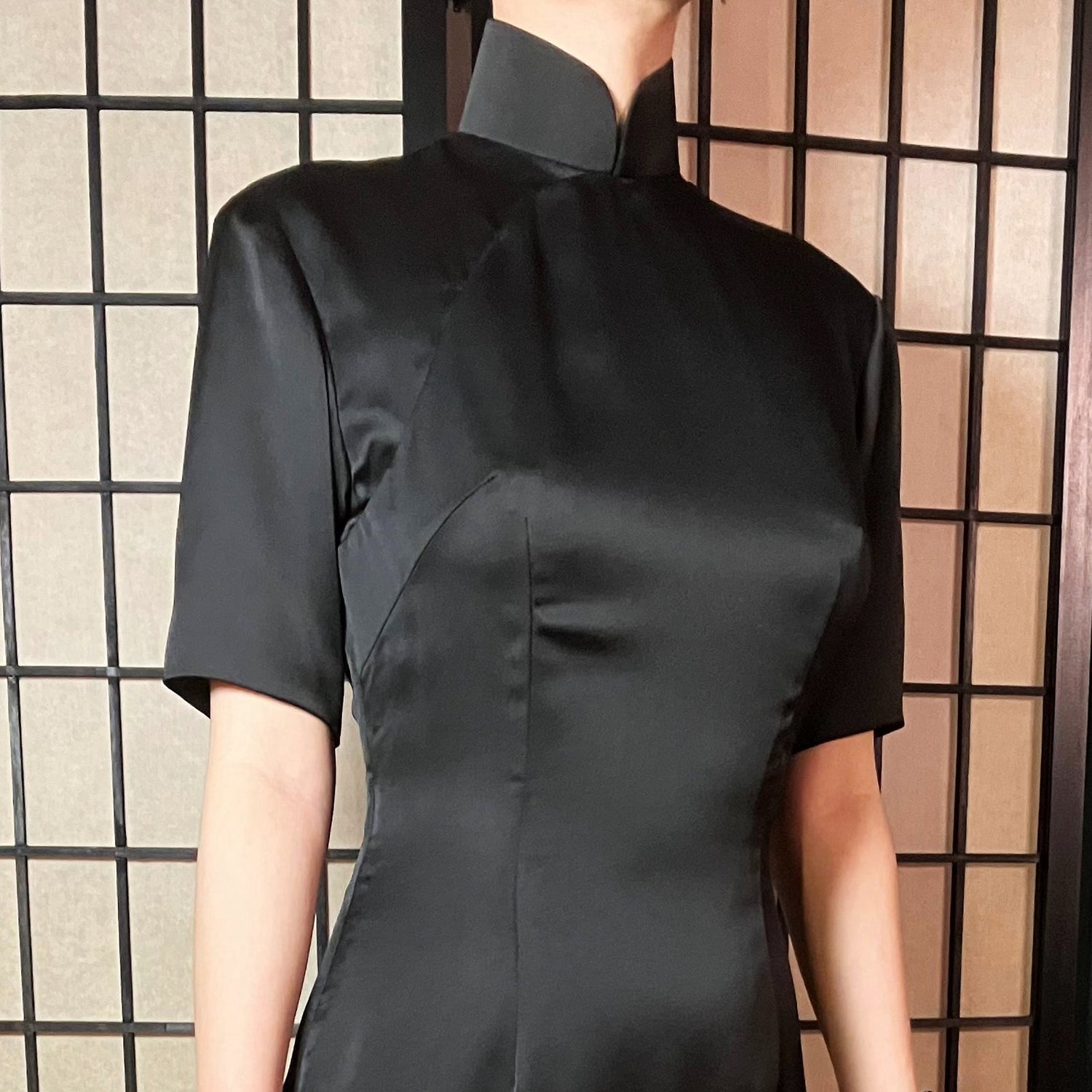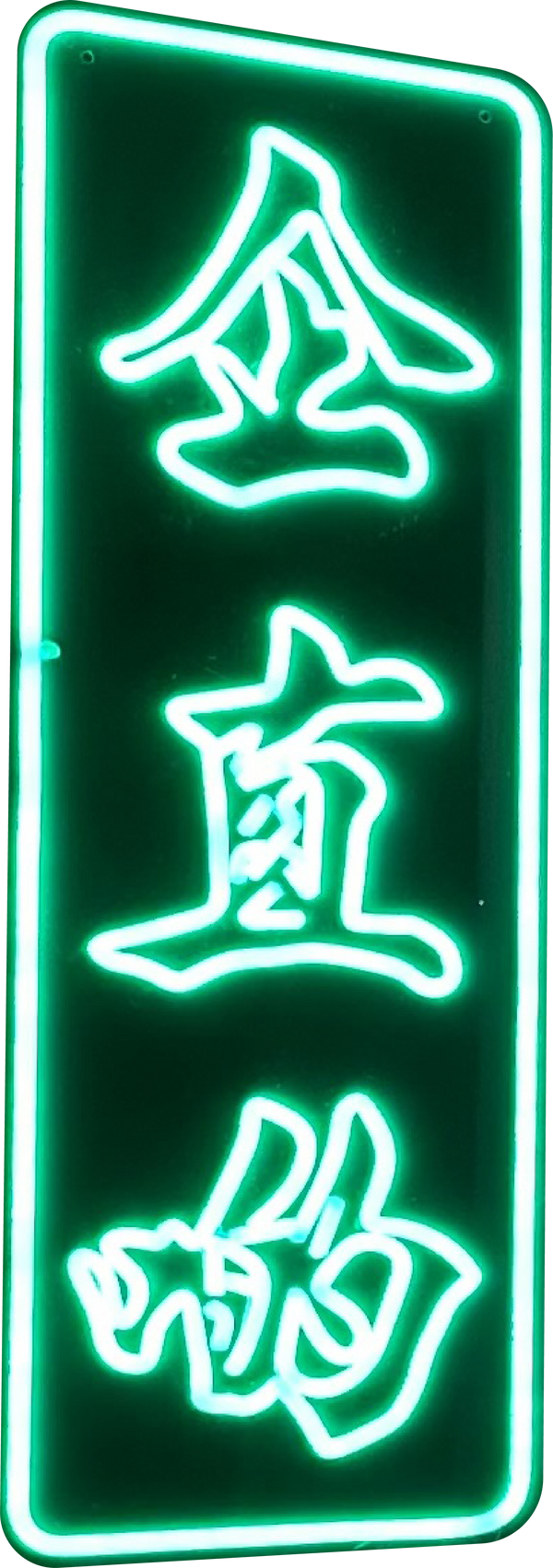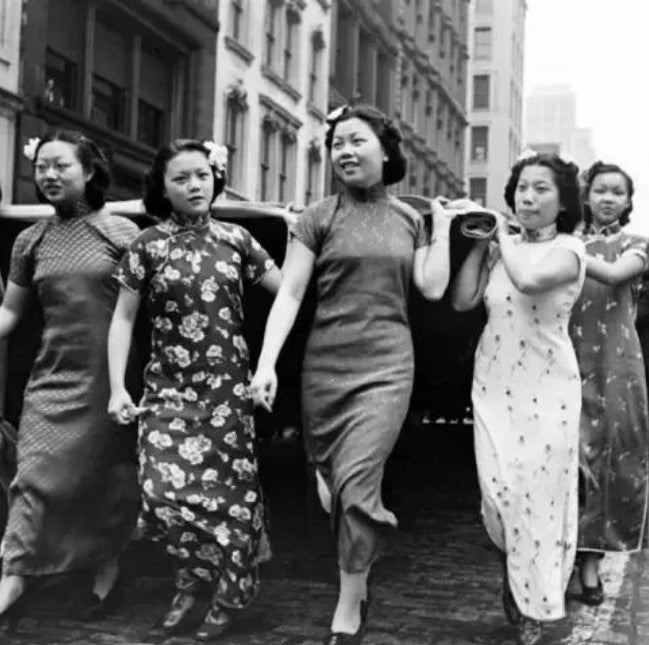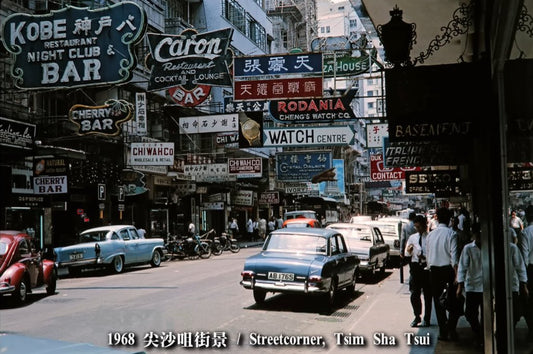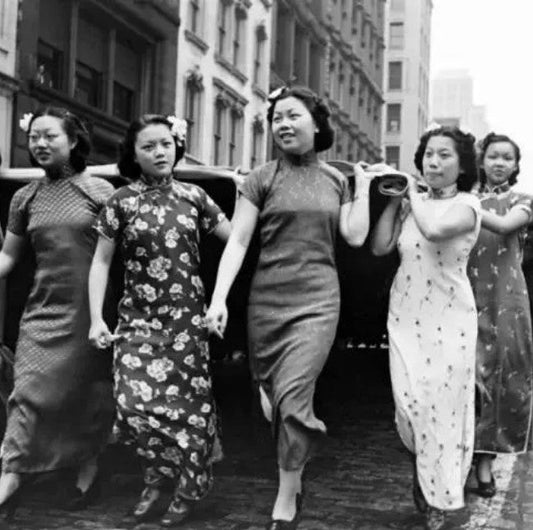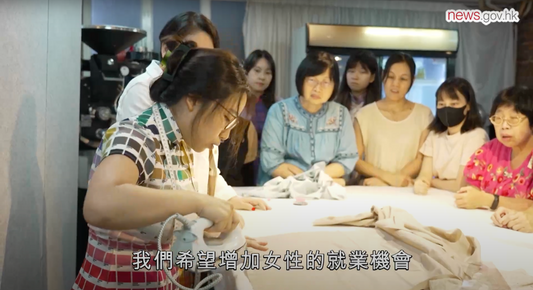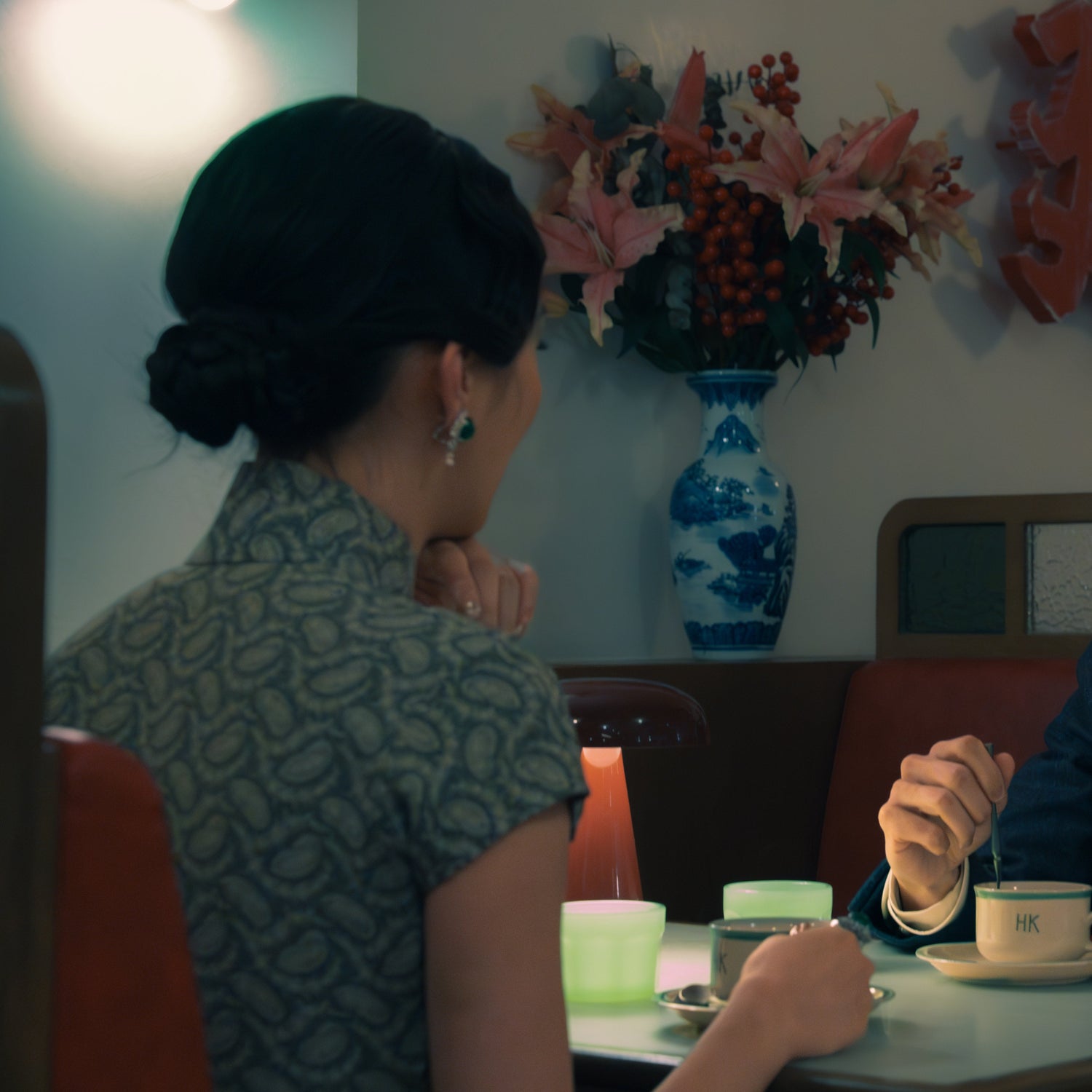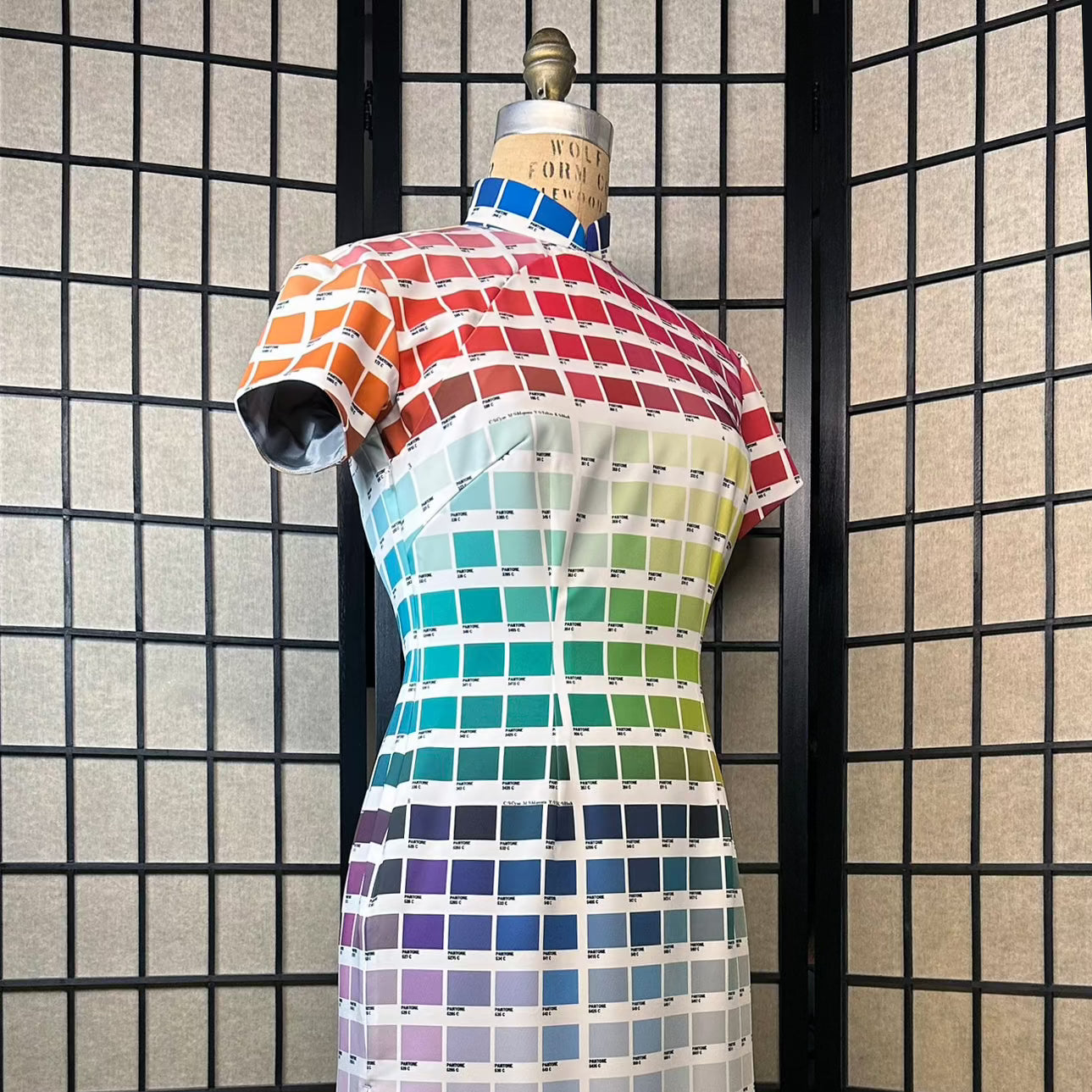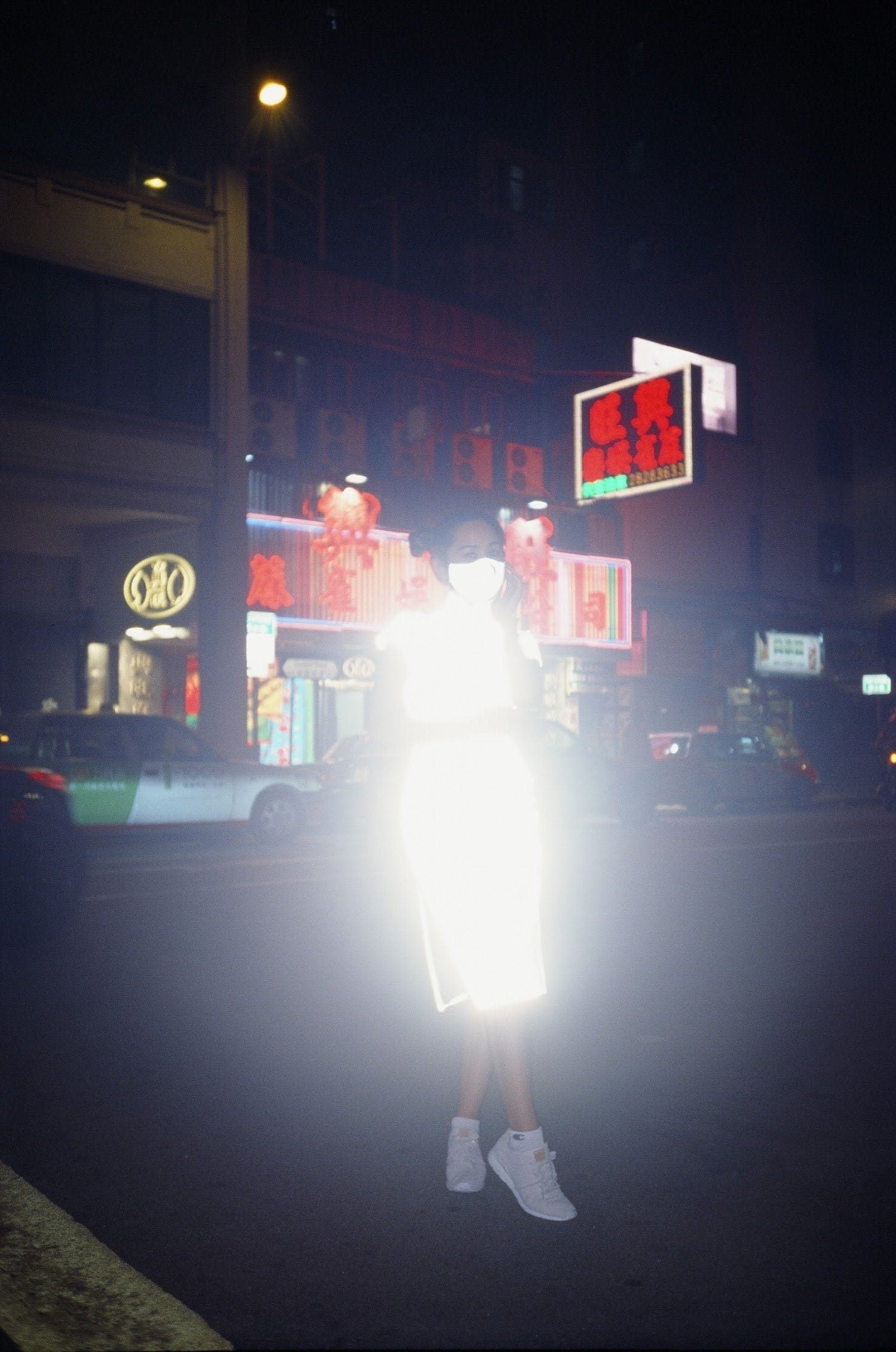The evolution of Chinese garments is a captivating narrative that mirrors the nation's cultural, social, and political metamorphosis. From the grandeur of the Qing Dynasty's robes (旗袍) to the refined elegance of the 1950s Hong Kong cheongsam (長衫), Chinese fashion has continuously adapted to reflect the zeitgeist of each era. This article embarks on a comprehensive exploration of this sartorial journey, shedding light on the myriad influences and innovations that have shaped Chinese garments over the centuries.
The Qing Dynasty: A Time of Opulence
The Influence of Manchu Culture
 The Qing Dynasty (1644-1912) marked a period of profound cultural synthesis, as the Manchu rulers introduced their distinct sartorial traditions to the Chinese populace. The Manchu robe, or "qipao" (旗人的袍:旗袍) was emblematic of this era, characterized by its loose fit, straight silhouette, and high mandarin collars. These robes were often crafted from luxurious silk and adorned with intricate embroidery, featuring motifs such as dragons, phoenixes, and floral patterns that symbolized power, prosperity, and longevity.
The Qing Dynasty (1644-1912) marked a period of profound cultural synthesis, as the Manchu rulers introduced their distinct sartorial traditions to the Chinese populace. The Manchu robe, or "qipao" (旗人的袍:旗袍) was emblematic of this era, characterized by its loose fit, straight silhouette, and high mandarin collars. These robes were often crafted from luxurious silk and adorned with intricate embroidery, featuring motifs such as dragons, phoenixes, and floral patterns that symbolized power, prosperity, and longevity.
The Manchu influence extended beyond aesthetics, as the dynasty implemented strict dress codes that dictated the attire of various social classes. The "Eight Banners"(八旗) system, a military and administrative structure, was reflected in the clothing, with specific colors and designs reserved for different ranks. This system reinforced the social hierarchy and underscored the authority of the ruling elite.

The Role of Social Status
In the Qing Dynasty, clothing was a potent symbol of social status and identity. The emperor and his court donned elaborate robes that showcased their elevated status and divine mandate to rule. These garments were often embellished with gold thread and precious gemstones, serving as a visual representation of wealth and power.
For the common people (peasants), clothing was more utilitarian, crafted from cotton or hemp and devoid of the opulent embellishments seen in the garments of the elite. The strict dress codes served to maintain the social order, ensuring that each individual's attire reflected their position within the societal hierarchy.
The Republican Era: A Shift Towards Modernity
The Fall of the Qing Dynasty

The collapse of the Qing Dynasty in 1912 heralded the dawn of the Republican Era, a time of significant upheaval and transformation. The establishment of the Republic of China brought with it new ideals of democracy, modernity, and progress, which were reflected in the evolving fashion landscape.
Traditional clothing styles began to adapt to these changing values, as the rigid dress codes of the past gave way to more fluid and diverse expressions of personal style. The qipao, in particular, underwent a significant transformation, evolving from its Manchu origins into a garment that embodied the spirit of modern China.

The Rise of the Modern Cheongsam
The modern cheongsam, also known as the qipao, emerged as a symbol of the new era, blending traditional Chinese elements with Western influences. This evolution was characterized by a shift towards more form-fitting silhouettes that accentuated the natural curves of the body, a departure from the loose-fitting robes of the Qing Dynasty.
The cheongsam became a popular choice among the urban elite, who embraced its elegant and sophisticated design. It was often made from luxurious fabrics such as silk and satin, featuring intricate embroidery and bold patterns that reflected the wearer's individuality and taste. This new style of cheongsam was not only a fashion statement but also a reflection of the changing social dynamics and the growing influence of Western culture in China.
The 1950s Hong Kong: The Golden Age of the Cheongsam
The Influence of Western Fashion



The 1950s was a transformative period for Hong Kong, as the city emerged as a vibrant cultural and economic hub. This era saw the fusion of Eastern and Western styles, resulting in a unique fashion identity that was both cosmopolitan and distinctly Chinese. The cheongsam became a quintessential symbol of this cultural synthesis, embodying the elegance and sophistication of the time.
Western fashion played a significant role in shaping the cheongsam of the 1950s. Designers began to experiment with different cuts, fabrics, and patterns, incorporating elements such as Western-style collars, shorter hemlines, and more fitted silhouettes. These innovations reflected the dynamic and modern spirit of Hong Kong, as the city embraced new ideas and influences from around the world.

The Cheongsam as a Cultural Icon
The cheongsam of 1950s Hong Kong transcended its role as a mere garment, becoming a cultural icon that symbolized the city's unique blend of tradition and modernity. It was worn by actresses, socialites, and everyday women alike, each adding their personal flair to the timeless design. Notable figures such as 樂蒂 (Betty Loh) and 林黛 (Lin Dai) were prominent in the 1950s, showcasing the cheongsam in films that celebrated its elegance. Their performances helped cement the garment's status in popular culture.
The cheongsam's popularity extended beyond Hong Kong, influencing fashion trends in other parts of Asia and the world. In the 1960s, 尤敏 (Lucilla You) continued this tradition, while Nancy Kwan gained international recognition for her role in the Hollywood film The World of Suzie Wong, where she wore the cheongsam, further elevating its status as a symbol of grace and charm.


The garment's cultural significance was further cemented by its presence in popular media, as it became a staple in films and photographs that captured the glamour and allure of the era. The cheongsam's enduring appeal lies in its ability to adapt to changing times while retaining its essence as a symbol of Chinese elegance and grace.
Conclusion
The evolution of Chinese garments from the Qing Dynasty to the 1950s Hong Kong cheongsam is a testament to the dynamic nature of fashion and its ability to reflect the cultural, social, and political changes of each era. From the opulent robes of the Qing Dynasty to the sleek and modern cheongsam, Chinese fashion has continuously adapted to the shifting tides of history, creating a rich tapestry of styles and influences that continue to inspire and captivate.
FAQ
1. What is the significance of the dragon motif in Qing Dynasty garments?
The dragon motif was a symbol of imperial power and authority in the Qing Dynasty. It was often used in the emperor's robes to signify his divine right to rule, as the dragon was considered a sacred creature that represented strength, wisdom, and prosperity.
2. How did Western fashion influence the modern cheongsam?
Western fashion influenced the modern cheongsam by introducing more form-fitting silhouettes and elegant designs, which became popular among the urban elite during the Republican Era. Elements such as Western-style collars and shorter hemlines were incorporated into the cheongsam, reflecting the growing influence of Western culture in China.
3. Why did the cheongsam become a cultural icon in 1950s Hong Kong?
The cheongsam became a cultural icon in 1950s Hong Kong due to its association with elegance and glamour, as well as its popularity among actresses and socialites. The garment's presence in popular media and its ability to adapt to changing fashion trends contributed to its enduring appeal and cultural significance.
4. What role did social status play in Qing Dynasty clothing?
Social status played a significant role in Qing Dynasty clothing, with strict dress codes that reinforced the social hierarchy and emphasized the power of the ruling class. The emperor and his court wore elaborate robes made from luxurious materials, while commoners wore simpler garments made from cotton or hemp.
5. How did the fall of the Qing Dynasty impact Chinese fashion?
The fall of the Qing Dynasty led to the emergence of the Republican Era, which brought about significant changes in Chinese fashion. Traditional clothing styles began to evolve, reflecting the new ideals of modernity and progress. The modernization of the cheongsam, in particular, symbolized the blending of Eastern and Western influences and the dynamic spirit of the time.
